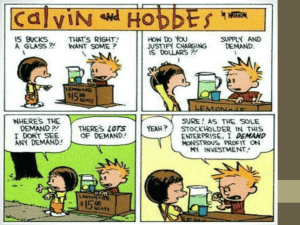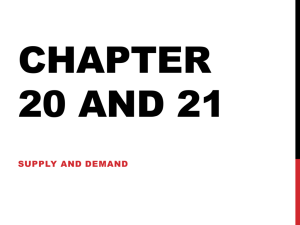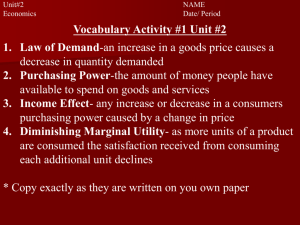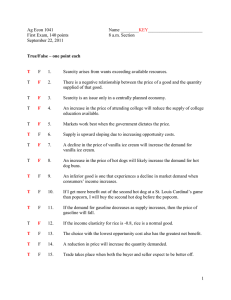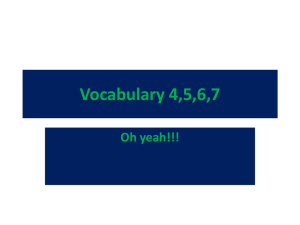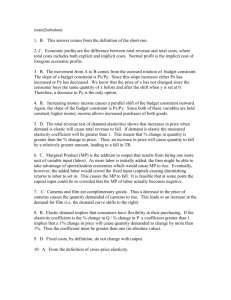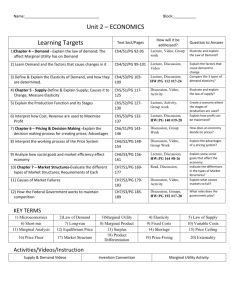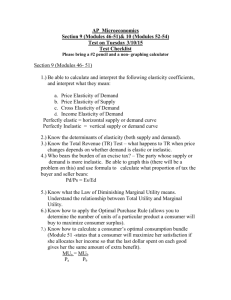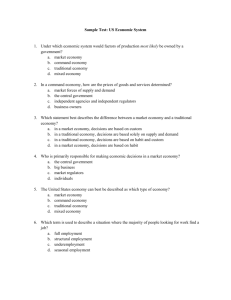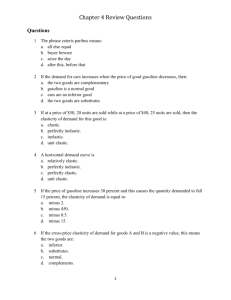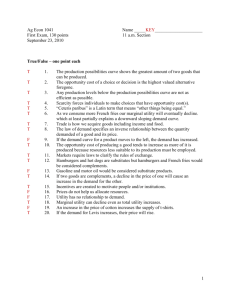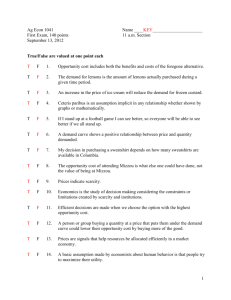ECO2 REV2 - Samar Reine
advertisement
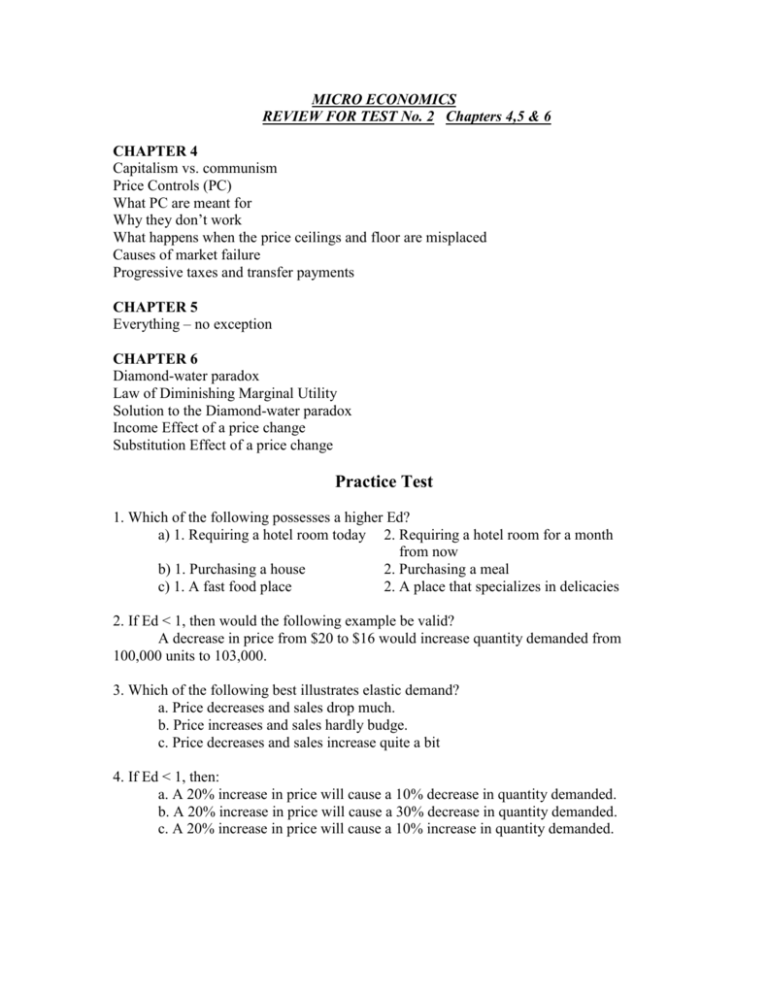
MICRO ECONOMICS REVIEW FOR TEST No. 2 Chapters 4,5 & 6 CHAPTER 4 Capitalism vs. communism Price Controls (PC) What PC are meant for Why they don’t work What happens when the price ceilings and floor are misplaced Causes of market failure Progressive taxes and transfer payments CHAPTER 5 Everything – no exception CHAPTER 6 Diamond-water paradox Law of Diminishing Marginal Utility Solution to the Diamond-water paradox Income Effect of a price change Substitution Effect of a price change Practice Test 1. Which of the following possesses a higher Ed? a) 1. Requiring a hotel room today 2. Requiring a hotel room for a month from now b) 1. Purchasing a house 2. Purchasing a meal c) 1. A fast food place 2. A place that specializes in delicacies 2. If Ed < 1, then would the following example be valid? A decrease in price from $20 to $16 would increase quantity demanded from 100,000 units to 103,000. 3. Which of the following best illustrates elastic demand? a. Price decreases and sales drop much. b. Price increases and sales hardly budge. c. Price decreases and sales increase quite a bit 4. If Ed < 1, then: a. A 20% increase in price will cause a 10% decrease in quantity demanded. b. A 20% increase in price will cause a 30% decrease in quantity demanded. c. A 20% increase in price will cause a 10% increase in quantity demanded. 5. If yogurt was priced for $3 each at a marginal utility of 15, and granola was priced at $6 with a marginal utility of 24, then the consumer has equated his marginal utility per dollar. 6. If Demand for laptops is inelastic and the price increases, then total revenues of laptops would increase. 7. The lower the quality, the higher the elasticity of demand. 8. Which elasticity of supply is best for a producer? a. A price change from $10 to $13 that increases production from 80,000 units to 100,000. b. A price change from $10 to $9 that increases production from 50,000 units to 55,000. c. A price change from $10 to $8 that decreases production from 50,000 units to 30,000. 9. If price decreases by 10% and quantity demanded increases by 5%, then Ed = ____. Therefore, Ed is said to be ________________. 10. Interpersonal utility comparison demonstrates how satisfaction varies from person to person and how we mustn’t assume that it’s objective. 11. Price increases from $5 to $5.10 and quantity demanded drops by 100%, then Ed is ______________________. 12. Explain why price ceiling are problematic: 13. Explain why price floors are problematic: 14. Market failure is the result of misuse of resources and technology. Either over consumption or under production can lead to market failure. 15. Lack of competition means fewer companies will grow leaner and more profitable which is total production increases and affordability returns. 16. Give an example of negative externality. 17. How can negative externality lead to market failure? 18. What are public goods for? 19. When is income inequality a causation for market failure? 20. How does the government deal with income inequality? 21. Be aware of permanent shortages and surpluses. 22. The government attempts to reduce negative externalities via: a. More stringent regulations what increase production costs and restrict production and consumption b. Higher taxes as to deter consumption c. Stricter laws, perhaps even a plain ban d. All of the above 23. Which of the following would reduce price elasticity of supply? a. Greater warehousing ability, where sellers are able to stock their product when necessary. b. Having limited idle capital c. If time is restricted, and deadlines are looming too fast d. If inputs necessary to the production process are scarce or costly e. B, C, and D 24. It’s possible to own an asset with high value in exchange but low value in use. 25. Which of the following represents the Substitution Effect? a. Burger King offers their whoppers at $.99, and consequently steals sales from the competition. b. Customers find Burger King’s whoppers more delicious and buy more of them. 26. A valid example of Income Effect would be of John, whose budget of $500 allows him only 3 nights in NY, though five years ago the same $500 would have afforded him 4 nights. 27. Relative Marginal utility is objective.


